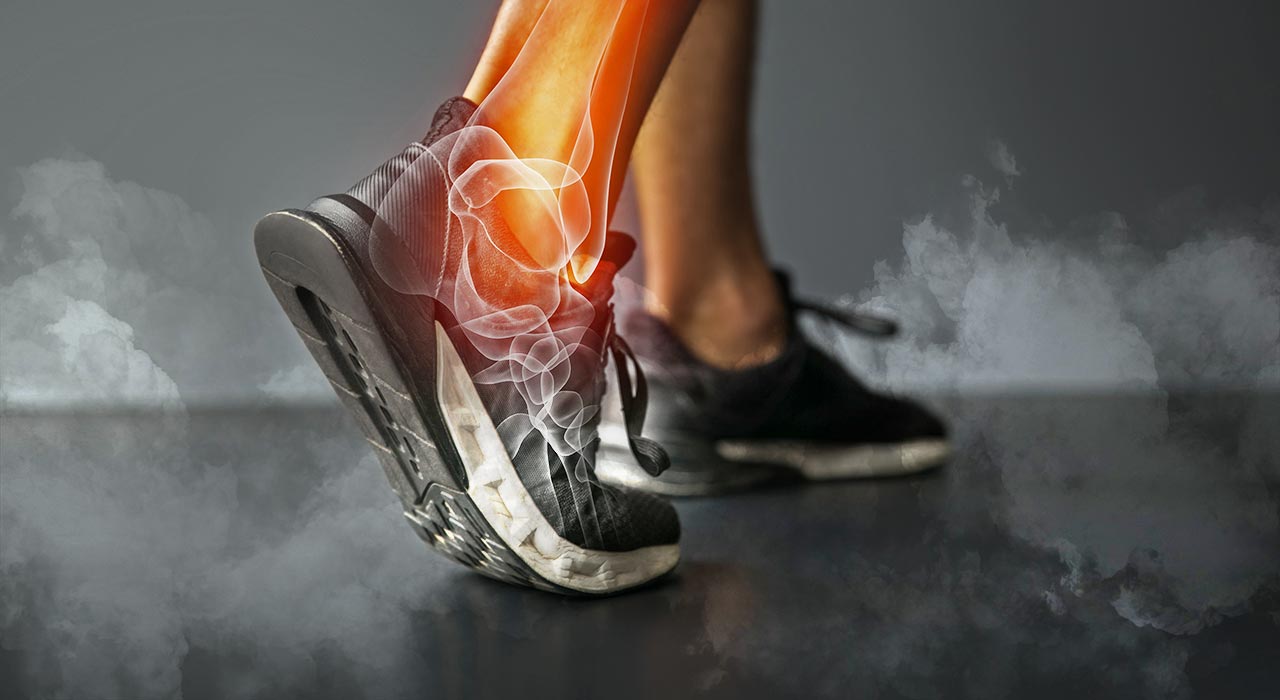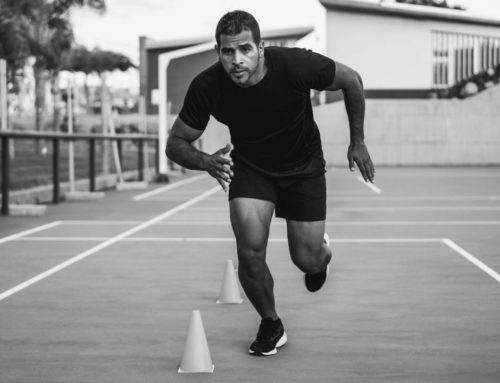Your 10 must-do tips for training around injuries so you’re ruthlessly consistent with achieving your goals.
Training with relentless vigor for years generates natural wear on your body. Muscles develop scar tissue, ligaments become strained, joints lose mobility all of which combine to create physical impingements. Although prevention is the best cure, sometimes that point passes which leaves you with a dilemma: how can progression be attained while circumnavigating injury? Well, here’s a copacetic 10-step plan to cope with injuries without having to avoid breaking a sweat.
1. Work on Flexibility
Loss of pliability is a common trait amongst those who have spent years hoisting weight, eventually this will transcend into vulnerability, causing an injury.
Investing more time in developing mobility will help work around existing injuries you’re experiencing, as well as preventing others. Aim to spend at least 20 minutes per day enhancing flexibility. The upshot will be reduced frailty particularly under load. Range of motion will also improve which heightens your ability to achieve global muscle fiber stimulation and cultivates faster growth in the process.
2. Use ice
Any tissue which is traumatized will suffer inflammation which becomes a fountain of pain – treating the area with ice helps alleviate this. Myositis is the correct term which describes this phenomenon in muscles, so using ice to suppress the issue won’t just nullify pain, it will also help the affected area recover. Aim to ice the throbbing area 3-4 times per day for 5-10 minutes each time.
3. Seek therapies
Visiting a chiropractor is a great decision if you have neck or back pain because this could help alleviate issues which will also probably impact the shoulder joint. These are common issues for anybody who lifts heavy weight. Allowing a sports therapist to perform soft tissue therapy on scar tissue will provide relief in affected areas, improving your ability to train around injuries. Spend time learning what type of therapist could help with your specific injuries; the difference can be life changing with regards to pain relief. Often, injuries are impingements which involve neurological pain so therapy usually releases this and provides near-instant relief.
4. Warm up for longer
Where there is pain, inflammation will naturally set in so take longer to warm up, encouraging blood to pool into that muscle before training with real intensity. The extra blood will transport nutrients into the affected area, the additional warm-up time will improve the elasticity of the muscle, and you can also gauge how severe the pain is before loading it at maximal capacity. Although this may appear basic, it is alarming how many people will skip a comprehensive warm-up, especially when dealing with compromised health.
5. Choose the best angles
Some angles will antagonize your injury more than others; this is entirely subjective depending on the location, causation, and type of complaint you’re dealing with. The body is a seriously intelligent machine which conveys many signals, including clues which let you know what it does and doesn’t like, so listen to these messages. To illustrate this point, if you have a shoulder-related problem, pressing on chest day will become a hindrance so using incline dumbbell press opposed to machine press may be far kinder on the shoulder. With less restriction and more freedom to move the pain point, one exercise becomes far more appropriate than the other; examples like this exist for all areas of the body.
6. Train with more reps
Higher repetition training is one of the best remedies for working around pain while continually forcing progression. By definition, higher repetition training reduces the physical trauma by using less weight. However, it still induces significant hypertrophic gains via the sarcoplasmic pathway. The more rapid accumulation of blood in the muscle from high rep training is also conducive to recovery, given that nutrient transportation will naturally improve in this environment. Try the Dramatic Transformation Principle (DTP) to thrust forth your evolution while working around injuries. Here’s an example DTP formation to apply in the gym. Select compound exercise for the muscle group you’re training and perform:
Set 1 – 50 repetitions
Set 2 – 40 repetitions
Set 3 – 30 repetitions
Set 4 – 20 repetitions
Set 5 – 10 repetitions
Select a second compound exercise for the muscle group you’re training and perform:
Set 1 – 10 repetitions
Set 2 – 20 repetitions
Set 3 – 30 repetitions
Set 4 – 40 repetitions
Set 5 – 50 repetitions
Rest periods will vary between 60 – 120 seconds, with longer recovery time taken on the lower repetition sets to allow for ATP regeneration.
7. Use Unilateral machines
Some unilateral machines are perfect to work around injuries depending on the specific circumstances. They reduce the stress on ancillary muscles and connective tissues when getting into position as well as the duration of the set. Using a single arm chest press, say, would save your shoulder joint handling heavy dumbbells while allowing for pec stimulation to occur as normal. Shortening the range of motion marginally to reduce pain while attaining muscle recruitment can sometimes be a smart strategy, and unilateral machines are perfect for this.
8. Change training split
Depending on where your injury lies, rearranging your training split could have exponential benefits. As the body fatigues and the kinetic chain becomes less robust, weak areas will naturally fall under more stress, this is particularly true of injured areas. By training the affected area first, you can offer more support to the area. It also means you can design your split to create the least amount of stress on your injury. For example, if you have a bad lower back, do not train legs the day before back. Both body parts require a lot of lower back stabilization, by splitting them further apart across the week you reduce stress. Always allow for recovery time between workouts, mainly when a muscle or area isn’t entirely fit.
9. Avoid exhaustion point
Overtraining is to be avoided under all circumstances; the importance of this must be further emphasized when carrying an injury. Amongst other unwanted impacts, overtraining will induce myositis (muscle inflammation) which means the body has to work harder to reduce this. In the context of carrying an injury, you want the body to prioritize the troubled area to help with healing. Do what you must to continue progressing in the gym, nothing more. Overdoing it will only take away from repairing the injury you’re currently battling with.
10. Sweat the sauna
Specifically, the infrared sauna because it helps all of the systems within your body relax. Relaxation therapy facilitates the recovery of internal nervous systems that directly impacts the way in which muscles can fall into a more profound state of rest. By turning the nervous systems “down”, muscles become less tense, allowing inflammation to dissipate. On a daily basis, I try and spend 20 minutes in my Clearlight infrared sauna.
Implementing this comprehensive 10-part guide to training around injuries will hold you in good stead for prolonged performance, no matter your situation. Assimilate this information and apply it within the context of your circumstances.
EXPERT: Kris Gethin is a nutrition consultant, trainer and CEO of Kaged Muscle.







